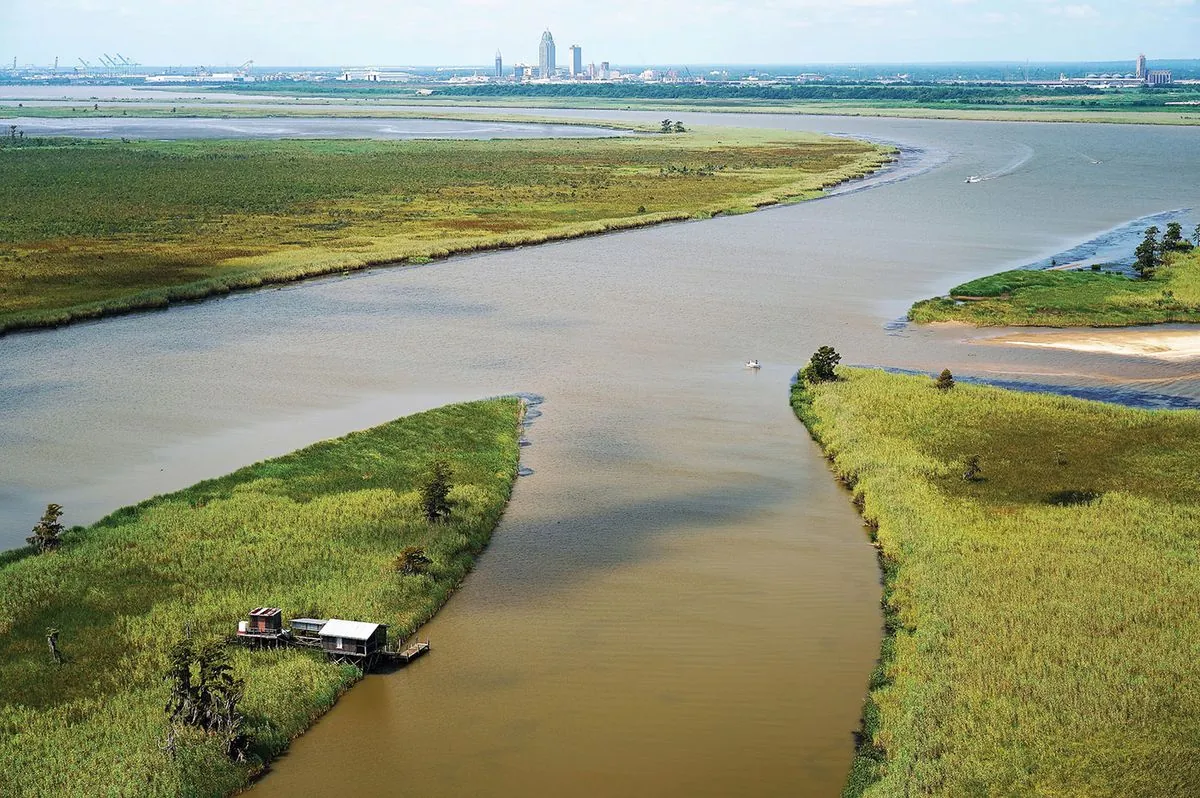The Mobile-Tensaw Delta, a 400-square-mile (1,036-square-kilometer) wetland expanse in Alabama, stands as one of North America's most biodiverse ecosystems. This intricate network of cypress swamps, oxbow lakes, and marshlands plays a vital role in maintaining the health of the Gulf of Mexico and supports an astonishing array of plant and animal species.
Bill Finch, director of a forest research center, describes the delta as "a dynamo" that facilitates energy exchange between river systems and the Gulf. The area's ecological significance extends far beyond its boundaries, with two-thirds of Alabama draining into this natural filter that cleanses water and traps sediment, protecting Mobile Bay and its fisheries.
The delta's biodiversity is unparalleled in North America. With approximately 350 fish species in the Mobile River basin, it surpasses the aquatic diversity of entire states like California. The region boasts over 100 crawfish species, nearly 35 turtle species, and more mussel varieties than the entire continent of South America. This richness is partly attributed to Alabama's warm, humid climate and the fact that glaciers never reached the state during the Ice Age.
Conservation efforts are underway to protect this ecological treasure. In spring 2024, The Nature Conservancy acquired 8,000 acres (3,237 hectares) of forested wetland at the delta's northern edge. This purchase aims to preserve critical bird habitats and fish spawning grounds that were at risk of logging.
However, challenges persist. Climate change poses a significant threat, with stronger hurricanes and saltwater surges causing erosion and tree mortality. The potential invasion of Asian carp through a canal connecting the Tennessee and Tombigbee rivers could devastate native fish populations. Additionally, past industrial activities have left a legacy of pollution, including a recent agreement to remove 21 million tons of coal ash near the Mobile River.
Conservation strategies extend beyond the delta itself. Mitchell Reid of The Nature Conservancy emphasizes the importance of protecting the entire Alabama watershed, which reaches into Tennessee, Mississippi, and Georgia. Efforts include working with the U.S. Army Corps of Engineers to create fish bypasses around aging dams on the Alabama River, potentially benefiting up to 20 species and aiding the recovery of endangered sturgeons.
"I know I live in the most beautiful place in the world. It's a piece of heaven to me."
Local residents like Lucy Hollings, known as "Ms. Pie," embody the deep connection between people and the delta. At 77, she continues to fish daily and operates Cloverleaf Landing, a boat launch that provides access to the river and delta for anglers.
Experts stress the importance of public awareness and access to the delta. Jimbo Meador, an 82-year-old lifelong resident and former tour guide, believes that experiencing the area firsthand is crucial for fostering appreciation and conservation efforts.
As conservation work continues, balancing ecological preservation with human needs remains a challenge. With over 95% of Alabama's land privately owned, cooperation between landowners, government agencies, and non-governmental organizations is essential for effective conservation. The Mobile-Tensaw Delta's future depends on these collaborative efforts to protect one of North America's most vital and diverse ecosystems.
